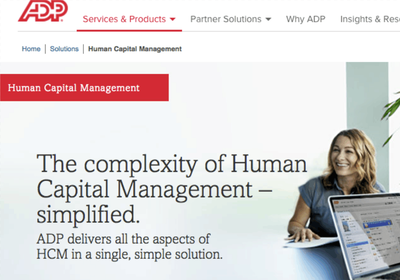
How is the changing role of the global payroll professional—typified by greater interaction with the human resources department, data analysis, and strategic planning—making an impact in the field?
I think one of the most important changes payroll professionals are encountering is the truly “global” nature of their roles.
This transition not only impacts large multinational companies, but also companies of all sizes that are better able to serve markets anywhere in the world. These days, more payroll organizations are supporting employees across geographies and countries. To do that effectively, they need to build skills to manage organizations, systems, and technologies that support multiple regulatory environments, laws, and compliance frameworks. This is quite a challenge.
Another important dynamic is the changing role of the global payroll professional as the keeper of valuable data that can help support not just HR but strategic business decisions. Payroll data is valued as a critical input to business analytic tools.
How can the global payroll department integrate on a strategic level with corporate functions such as finance, human resources, and other departments to provide a competitive advantage?
Payroll today is not just about paying employees. It’s become an important source of critical data that, if used properly, can help all executives at a company make better decisions. This includes where to allocate resources, where to invest, and potentially what markets they’re better poised to serve. As HR leaders continue to seek a seat at the executive table, it’s become evident that payroll itself is one of the best, most credible sources of analytical data to help leaders make better business decisions.
 What are the emerging trends or issues that have your attention in global payroll?
What are the emerging trends or issues that have your attention in global payroll?
Global payroll is always a very dynamic space, but there are three high-level trends I’m seeing:
The first is compliance. While not a new trend, the world is becoming a more complicated place in terms of compliance frameworks. I’m not just referring to tax laws, but many regulations such as data privacy that are becoming significantly more complex. It’s apparent that many of today’s governments are using regulation as a source of additional revenue, so many of the new regulations have real teeth in them, with severe financial ramifications for noncompliance. It is interesting to know that in the 1970s only two countries had data privacy regulations on the books. Today, more than 90 countries have active, stringent data privacy laws. This trend makes the need for compliance expertise even more critical.
Talent mobility is another major trend. Businesses of all sizes are finding that meeting the needs of a more mobile workforce is very challenging. This used to be an issue reserved for large multinational companies, but it’s become one that businesses of all sizes are encountering. How does a business support the broad payroll needs of employees in various parts of the world? You see this issue becoming even more pronounced as governments around the world try to manage their revenue streams. Governments want to be sure you’re paying and taxing employees correctly–taking into account where they live, work, or even just travel.
The third trend I see is integration. Businesses need to not only use and maximize the analytics they extract from HR and payroll data, they need to be able to access that data from a unified system–a data warehouse. In order to effectively manage global payroll, businesses need to be compliant, timely, and accurate. But integration must be enabled to ensure that the data is feeding a central repository accurately and in real time so that executives can use that data for decision-making purposes.
Is there a frequently asked question from your clients that you think will no longer be part of the conversation in global payroll five years from now?
It’s more than just a single question! There’s an entire topic that’s important to the value we bring to clients today but may not be as necessary in the near future—our ability to help clients with employee contact centers that can help businesses manage and satisfy employees’ payroll questions. Instead of getting calls and questions via telephone or email, advances in technology are filling the need for employees seeking answers to questions regarding their pay.
We already see this trend developing. For example, in the United States more employees of ADP clients view their pay slips on their mobile devices than on an e-pay slip or hard-copy pay slip. In Europe, we receive 85% of payroll inquiries via some form of electronic communication, CRM ticket, or e-mail, and only 15% of the inquiries via phone call. This trend will definitely continue as ADP innovates on technology. Our goal is to give employees a best-in-class solution to more easily and directly access their payroll information in an intuitive way, helping to reduce the number of times an employee needs to submit questions to a service center.
How would you advise someone whose company is just beginning to expand to a global payroll solution, with regard to risk management and compliance?
There’s a lot of talk about the technology available today to help businesses support global payroll. If a company is just starting to invest in a solution, certainly it should be investigating technologies that will help it support a global workforce. But technology–even cloud-based technology–is not enough to ensure global payroll success. Today’s businesses need a combination of technology and expertise from a trusted partner who has the on-the-ground resources necessary to ensure compliance today and in the future. The regulatory space is only going to grow more dynamic in the years ahead!
The ADP logo and ADP are registered trademarks of ADP, LLC. All other marks are the property of their respective owners. Copyright © 2016 ADP, LLC.